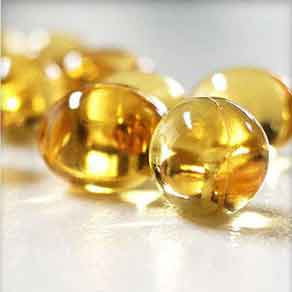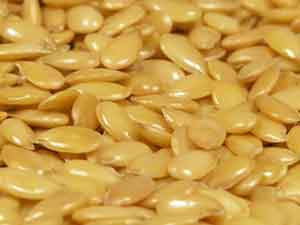 If you are deeply interested in fighting acne here is more advanced information that I’ve gathered.
If you are deeply interested in fighting acne here is more advanced information that I’ve gathered.The hormones
One of the main factors causing acne is the excess hormones in our body. When our hormones are out of balance they send signals to the respectful glands to produce additional amounts of oil in order to restore the balance.
During teenage times the androgen hormone levels are spiking. This causes an excess sebum oil production which at the end of its pathway clogs our hair follicles and thus contributes to the creation of acne.
Why getting sufficient essential fatty acids(EFA) is important
Recent studies show that consuming essential oils in the right proportions normalizes the levels of EFA's in our sebaceous glands. The same EFA's control the production of androgen hormones thus achieving a normal hormonal balance in our body.
Some facts about EFA
When our body has a deficit of essential fatty acids, we will have:
- a weaken immune system
- more inflammation
- poor skin
- skin eruptions that won’t heal easily
- increased sebum production
- increased sebaceous glands size
Benefits: These oils came straight from fish & vegetable oils, nuts, and seeds as well as additional supplements.
Balancing EFA’s
Prior to trying to manually balance your hormone levels, I would recommend you having hormonal tests. According to results, you'll see what needs to be adjusted.
The three fatty acids you need to balance out are the Omega-3, Omega-6, and Omega-9. Most people have an excess of Omega-6, so they need to concentrate on getting more Omega-3 EFAs to their diet. On the flip side if your ratio of Omega-3 is more than Omega-6, concentrate on supplementing with Omega-6 oils.
Use of flax seed oil
 It’s less potent than the fish oil, so when one wants quicker results he/she could try first fish oil and Spirulina and then steadily settle down with flax oil. The problem with the flaxseed oil is that the flaxseed must be grounded before digestion and also the body needs an enzyme called delta-6 desaturase (D6D) to transform the flax seed's Linoleic acid into GLA.
It’s less potent than the fish oil, so when one wants quicker results he/she could try first fish oil and Spirulina and then steadily settle down with flax oil. The problem with the flaxseed oil is that the flaxseed must be grounded before digestion and also the body needs an enzyme called delta-6 desaturase (D6D) to transform the flax seed's Linoleic acid into GLA. Spirulina is the most potent form of GLA because it is derived from marine or freshwater algae. Fish consuming such algae become more potent also. Spirulina, taken together with fish oil eliminates the need of D6 for your body in order to work fine. It's very high in protein and can also enhance your muscular strength and athletic endurance. Studies conclude that spirulina is effective in increasing isometric muscle strength, especially in trained athletes as well as enhancing isometric muscle endurance in trained and untrained participants alike.
Spirulina is the most potent form of GLA because it is derived from marine or freshwater algae. Fish consuming such algae become more potent also. Spirulina, taken together with fish oil eliminates the need of D6 for your body in order to work fine. It's very high in protein and can also enhance your muscular strength and athletic endurance. Studies conclude that spirulina is effective in increasing isometric muscle strength, especially in trained athletes as well as enhancing isometric muscle endurance in trained and untrained participants alike.
A mix of protein, amino acids, and vitamin B12, spirulina is an excellent dietary supplement for vegetarians, due to the fact that 60 to 70% of the plant’s structure is composed of protein. It can also benefit you with an immune-enhancing effect.
Nature of the D6D enzymeThis enzyme is dependant on so many factors like minerals like magnesium, zinc, calcium, vitamins B6, B12, E, biotin and it is important to remember that D6D potency declines as we age. The delta-6-desaturase enzyme is also inhibited by stress, disease, increased insulin levels, trans-fatty acids (like those found in margarine), saturated fats and alcohol. When D6 is not so strong the digestion of flax seed gets compromised. The solution is to try the direct supply of gamma linoleum acid(GLA) from foods such as spirulina, borage, night primrose, and others.
Fixing the inhibition problem
We can further inhibit enzyme D5D that converts the GLA to the bad Arachidonic acid which causes inflammation on our body and converts the hardly gained GammaLinoleic acid back to Arachidonic acid. The solution is to eat sesame seeds. They inhibit the production of this D5D enzyme so more GammaLinoleic acid stays for the body.
GLA is then broken down either to arachidonic acid (AA) or another substance called dihomogamma-linolenic acid (DGLA). Dihomo-gamma-linolenic acid (DGLA) is the actual precursor in the production of prostaglandins - it is beneficial and reduces the inflammation in our bodies which is our goal. By consuming enough magnesium, zinc, vitamins: C, B3, B6 GLA will convert to DGLA and not to AA.
The anti-inflammatory Prostaglandins
Prostaglandins are hormones made from fatty acids (with the help of enzymes) that act as chemical messengers. They act as regulatory molecules and are responsible for the cell's inflammatory and anti-inflammatory responses. Derived from Omega-3 and Omega-6 oils they help to regulate every function in our cells and organs. They also keep our androgen hormones in control so that excess sebum won't be produced resulting in acne. Normally, enzymes in your body break Omega-3 acids down to Eicosapentaenoic Acid(EPA) and Docosahexaenoic Acid(DHA). These two fatty acids then change into prostaglandins.
When Omega-3 fatty acids are not enough
 They consist of the following tree fatty acids: alpha-linolenic acid(ALA), eicosapentaenoic acid(EPA) and docosahexaenoic acid(DHA).
They consist of the following tree fatty acids: alpha-linolenic acid(ALA), eicosapentaenoic acid(EPA) and docosahexaenoic acid(DHA).ALA created in the chloroplasts of green plants from linoleic acid(LA) is important because it serves as a building material for EPA. DHA on the other side is an integral part of eye and brain tissue. It is found in marine algae (spirulina), plankton, fish, and mammals.
However, eating plenty of essential Omega-3 and Omega-6 fatty acids (EFA) is not enough to produce EPA and DHA. It is critical for acne and more importantly for your health that you get enough EPA and DHA in your cells and organs that they can convert and produce the required prostaglandins. Then it is necessary for you to take a fish oil supplement that contains both the EPA and DHA fatty acids.
In order to be fully digested they must be taken after eating otherwise they'll quickly burn as energy fuel and you won't fully benefit them.
Notes on salicylic acid
The anti-inflammatory mechanism of the salicylic acid is due to decreased prostaglandin synthesis and possibly by inhibiting the synthesis and/or activity of other mediators of the inflammation response. The type of inflammation that results in symptoms of redness and swelling is actually the acne.
The anti-inflammatory mechanism of the salicylic acid is due to decreased prostaglandin synthesis and possibly by inhibiting the synthesis and/or activity of other mediators of the inflammation response. The type of inflammation that results in symptoms of redness and swelling is actually the acne.
 Omega-3: Avocados, Sesame seeds, Pumpkin seeds, Walnuts, Dark leaf green vegetables (spinach, mustard greens, kale), Wheat germ oil, Salmon, Sardines, Albacore tuna
Omega-3: Avocados, Sesame seeds, Pumpkin seeds, Walnuts, Dark leaf green vegetables (spinach, mustard greens, kale), Wheat germ oil, Salmon, Sardines, Albacore tunaOmega-6: Flaxseed oil, Flax seeds, Grapeseed oil, Pistachio nuts, Olives, Olive oil, Sunflower seeds, Evening primrose oil, Pumpkin seeds, Black currant oil
Omega-9: Olive oil, Avocados, Cashews, Almonds, Olives, Sesame oil, Pecans, Pistachio nuts
